You’ll find that illusion settings use sophisticated metalwork with polished surfaces that mirror your diamond’s natural facets, making small gems appear dramatically larger and more brilliant. This technique blurs the boundaries between stone and metal through intricate craftsmanship that deceives the eye. Dating back to 19th-century innovations, these settings maximize visual impact while minimizing cost, offering you the appearance of substantial stones with superior protection and vintage appeal that our extensive guide explores further.
Understanding the Mechanics of Illusion Settings
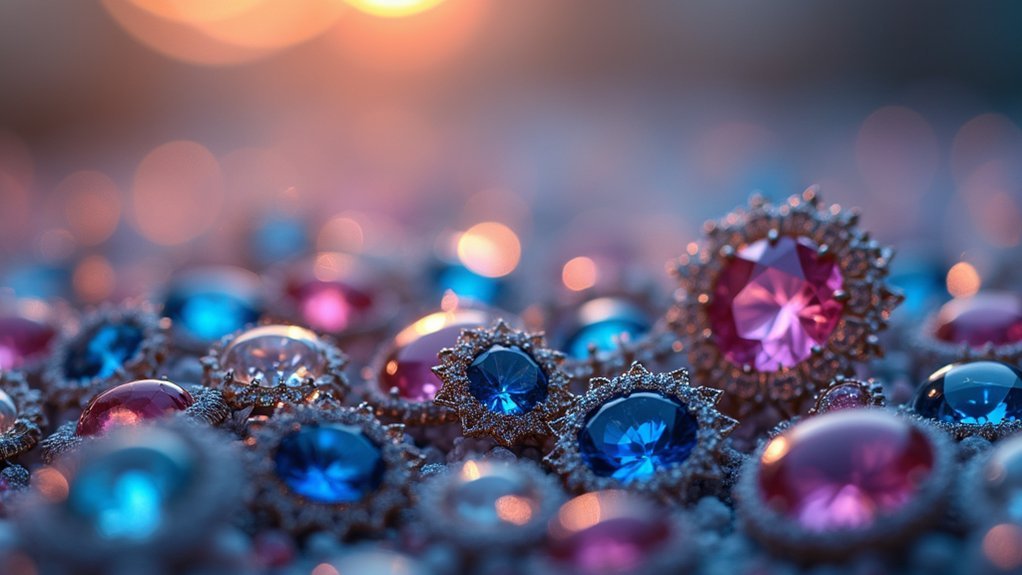
When you examine an illusion setting closely, you’ll discover that its effectiveness stems from sophisticated metalwork designed to deceive the eye. The setting strategically places polished metal surfaces around your diamond, creating patterns that mirror natural facets.
Illusion settings use cleverly positioned polished metal surfaces that mirror diamond facets, strategically blurring the line between stone and setting.
This intricate metalwork blurs the boundaries between stone and metal, making smaller diamonds appear considerably larger while amplifying their brilliance through enhanced light reflection.
You’ll notice the setting obscures where your gemstone ends and the metal begins, maximizing visual impact through clever optical tricks. The technique works exceptionally well with round brilliant cuts in white precious metals, as these complement the diamond’s reflective properties.
Cluster variations take this concept further, arranging multiple small stones together to create the appearance of one substantial diamond, delivering impressive results at a fraction of traditional costs.
History and Evolution of Small Gem Illusion Techniques
Although modern illusion settings appear sophisticated, their roots trace back to 19th-century innovation when jeweler Oscar Massin first developed this technique to enhance smaller diamonds’ visual impact.
You’ll find the history of illusion settings gained momentum during the Art Deco period, where geometric patterns perfectly complemented this style’s aesthetic goals.
The 1940s brought practical applications when resource scarcity made illusion setting uses essential for budget-conscious consumers.
You can see how designers developed intricate metalwork patterns that mimicked diamond faceting, maximizing light reflection from small diamonds.
By the 1950s and 1960s, major jewelry houses refined these techniques, creating patented variations that established a golden age.
Today’s jewelry design continues drawing inspiration from these historical innovations, proving Oscar Massin’s lasting influence on contemporary craftsmanship.
Benefits and Advantages of Choosing Illusion Settings
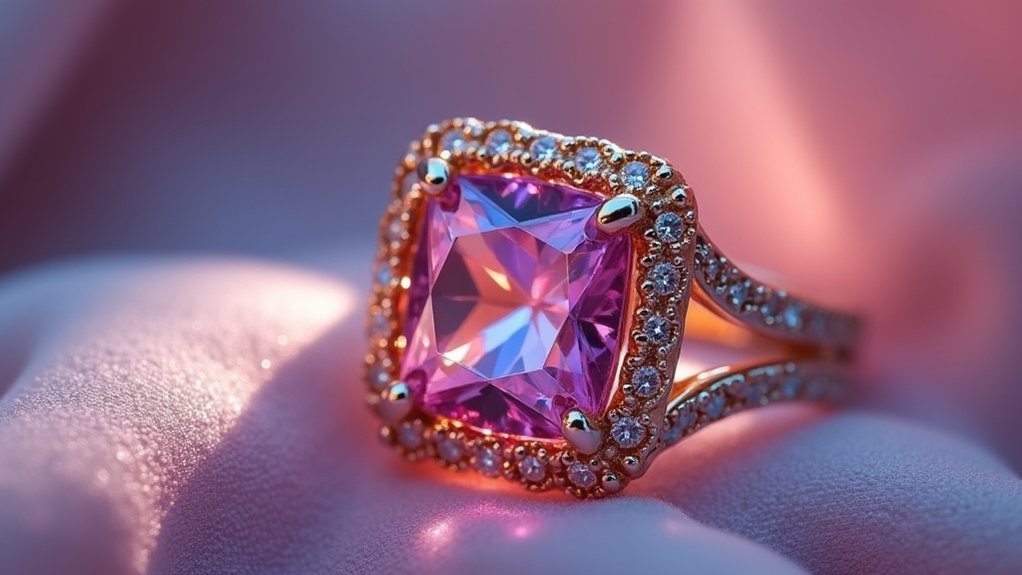
Since illusion settings maximize visual impact while minimizing cost, they’ve become a smart choice for buyers seeking impressive jewelry without breaking the budget.
You’ll achieve the appearance of a larger stone using small diamonds strategically arranged through intricate metalwork designs. This cost-effective approach delivers exceptional value while providing superior protection for the center stone, as surrounding metal shields it from potential damage.
You’ll appreciate the vintage appeal these settings offer, particularly their Art Deco period heritage that showcases sophisticated craftsmanship and intricate designs.
Unlike complex multi-stone arrangements, illusion settings require simpler regular maintenance, making them perfect for everyday wear.
You’re investing in both beauty and practicality when choosing this technique that transforms modest gems into stunning focal points with remarkable visual impact.
Types and Variations of Illusion Setting Designs
While single-stone illusion settings represent the most classic approach, you’ll discover a fascinating array of design variations that each offer unique aesthetic advantages.
These traditional illusion settings feature one small diamond enhanced by meticulously patterned precious metal that mimics larger stone facets.
Cluster illusion settings present another compelling option, where you’ll find multiple small diamonds positioned closely together. This arrangement creates the visual effect of a single large gem while allowing creative combinations of various shapes and colors.
You can also choose designs incorporating vintage design elements like filigree and milgrain, which showcase historical craftsmanship.
The intricate metalwork in these variations not only amplifies sparkle but enables extensive customization possibilities, letting you create unique arrangements while maintaining the illusion of substantial size.
Care and Maintenance for Illusion Set Jewelry
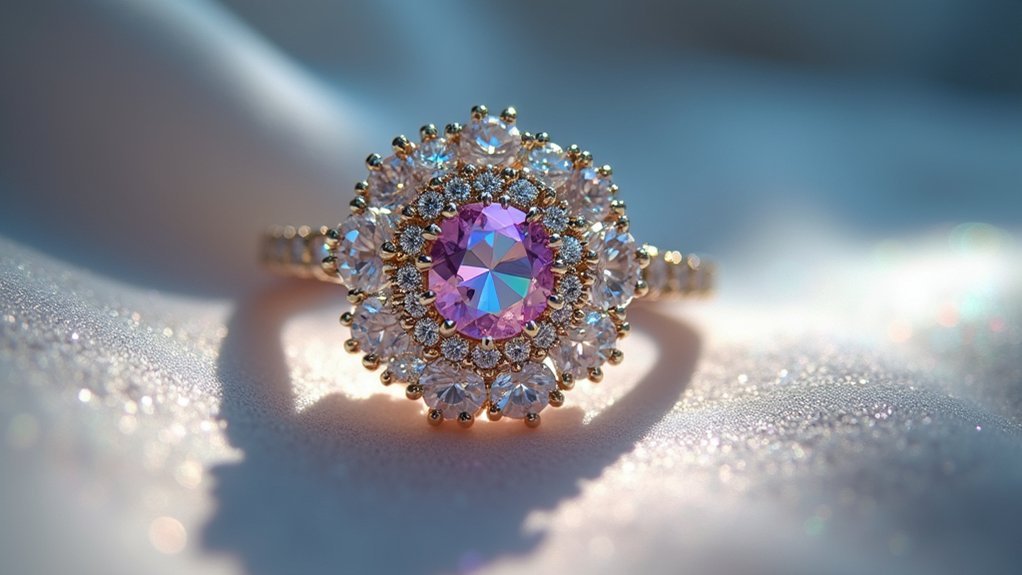
Because illusion settings rely on precisely crafted metalwork to create their magical size-enhancing effect, you’ll need to maintain these intricate details through proper care routines.
Regular cleaning with soft cloth and mild soap solution preserves the shine while avoiding harsh chemicals that damage the metal or stones. You should schedule professional inspections every 6-12 months to check for loosening stones and wearing prongs, ensuring your illusion set jewelry’s structural integrity.
Storing pieces separately prevents scratches, preserving the delicate metalwork.
Professional cleaning restores the mirror-like finish by removing accumulated dirt and oils. Consider refinishing every few years to maintain the original light-reflecting properties.
Proper maintenance keeps your illusion setting’s size-enhancing magic intact for years.
Frequently Asked Questions
What Setting for Small Diamonds?
You’ll want illusion settings that use intricate metalwork to make your small diamonds appear larger. They’re cost-effective, featuring patterned metals that mimic diamond facets while enhancing sparkle and visual impact markedly.
What Is the Illusion Setting?
You’ll find illusion settings use intricately patterned precious metal around small diamonds to mimic larger stone facets. This creates an optical illusion that makes your diamond appear considerably larger than it actually is.
What Setting Is a Form of Illusion Setting Where a Small Diamond Is Set on a Thin Faceted Plate of Gold?
You’re looking at a classic illusion setting when you see a small diamond mounted on a thin faceted gold plate. This technique makes your diamond appear larger by creating reflective surfaces that enhance sparkle.
What Are the Different Gem Setting Styles?
You’ll find five main gem setting styles: prong settings use metal claws for maximum sparkle, bezel settings offer protective metal rims, tension settings create floating effects, pavé features clustered small stones, and illusion settings enhance appearance.
In Summary
You’ve discovered how illusion settings can transform your small gems into stunning focal pieces through clever design techniques. Whether you’re choosing a vintage-inspired halo or modern reflective mounting, you’ll maximize your stone’s visual impact while protecting its delicate structure. Remember that proper maintenance will preserve both the setting’s reflective properties and your gem’s brilliance. With these insights, you can confidently select illusion settings that’ll showcase your precious stones beautifully for years to come.

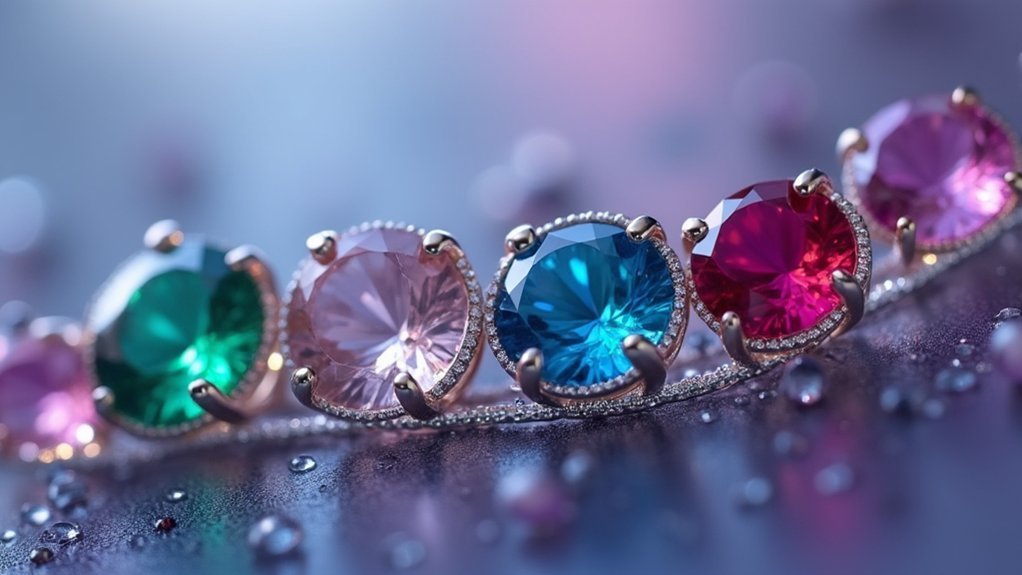
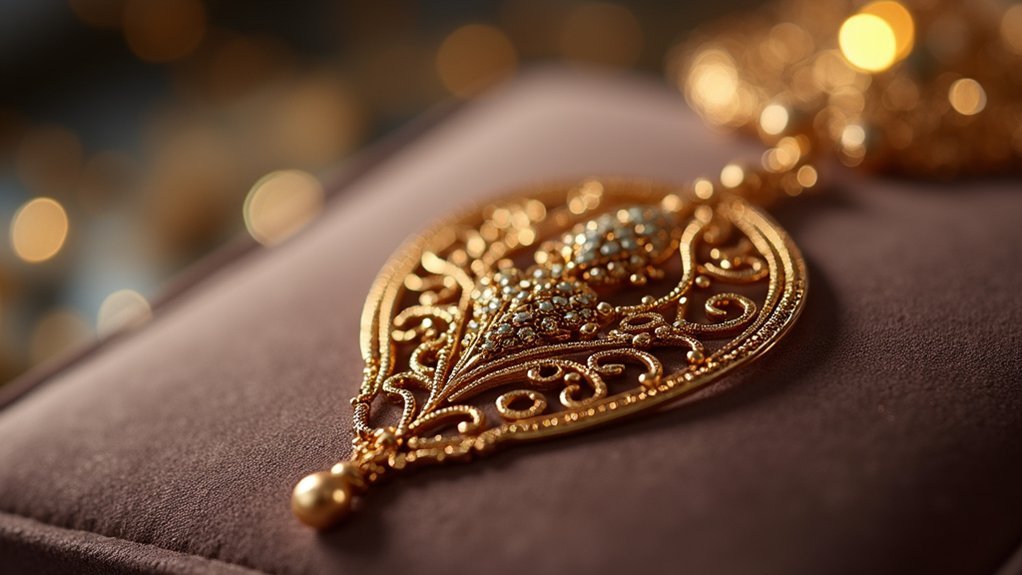


Leave a Reply